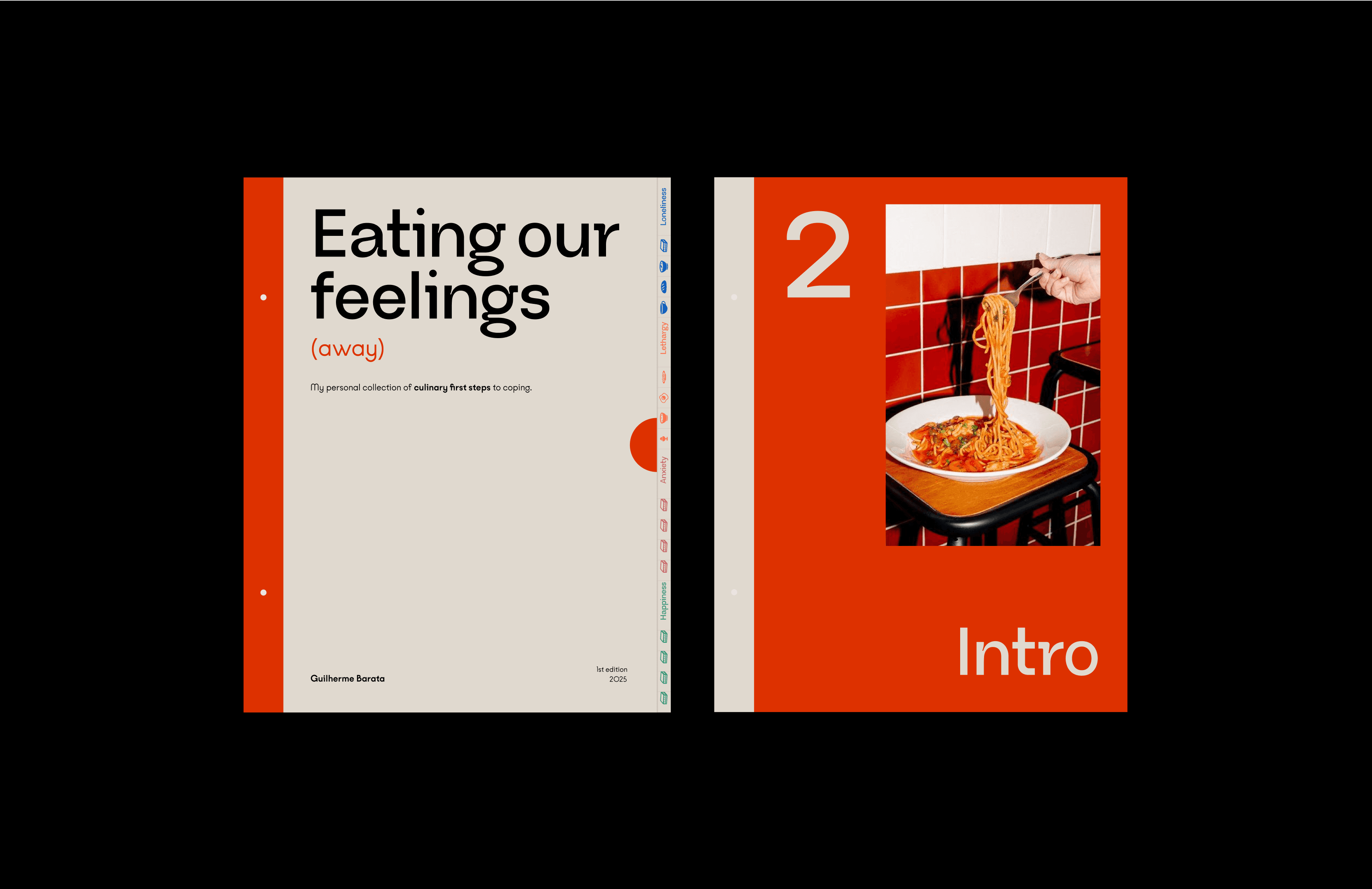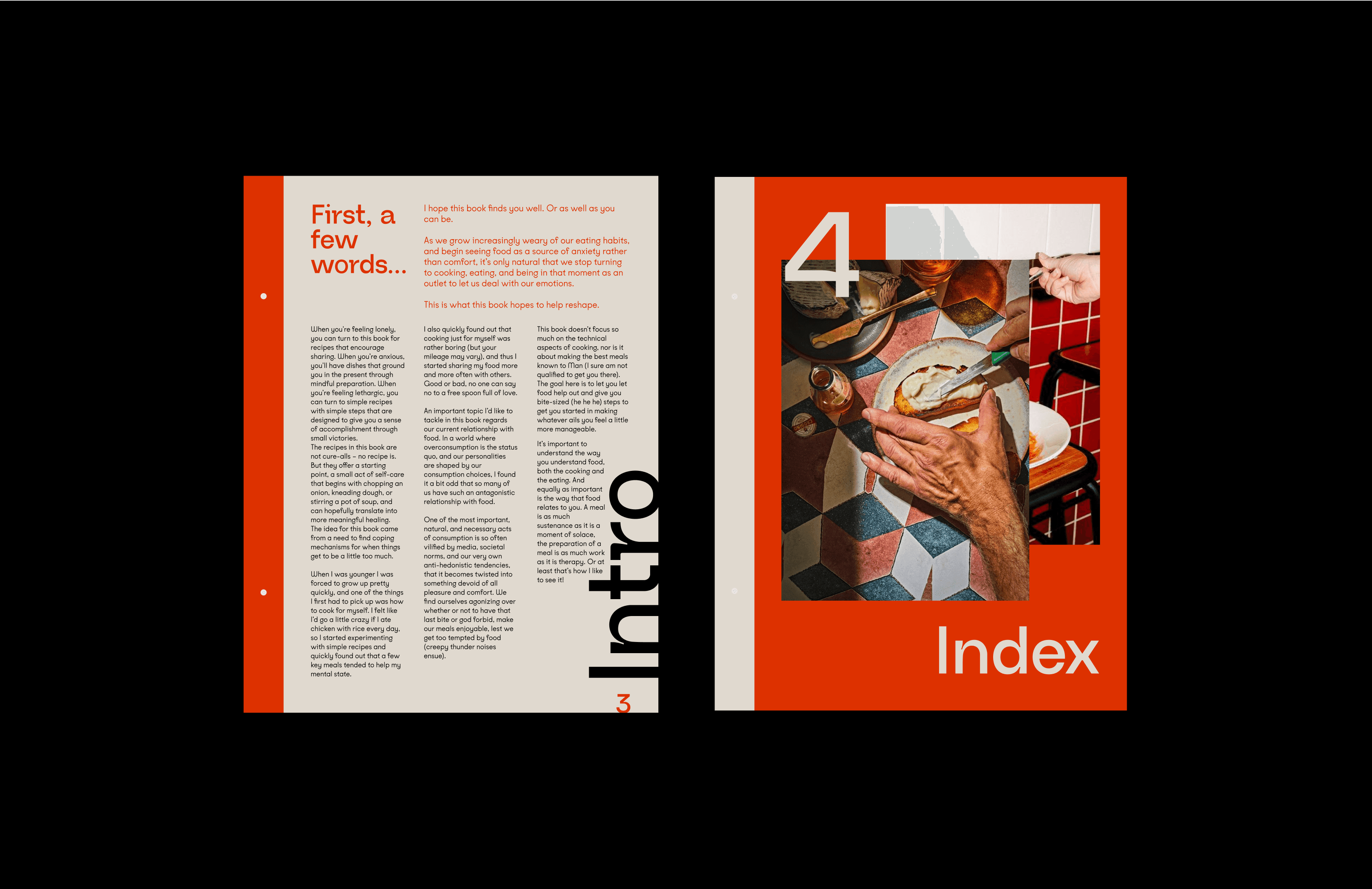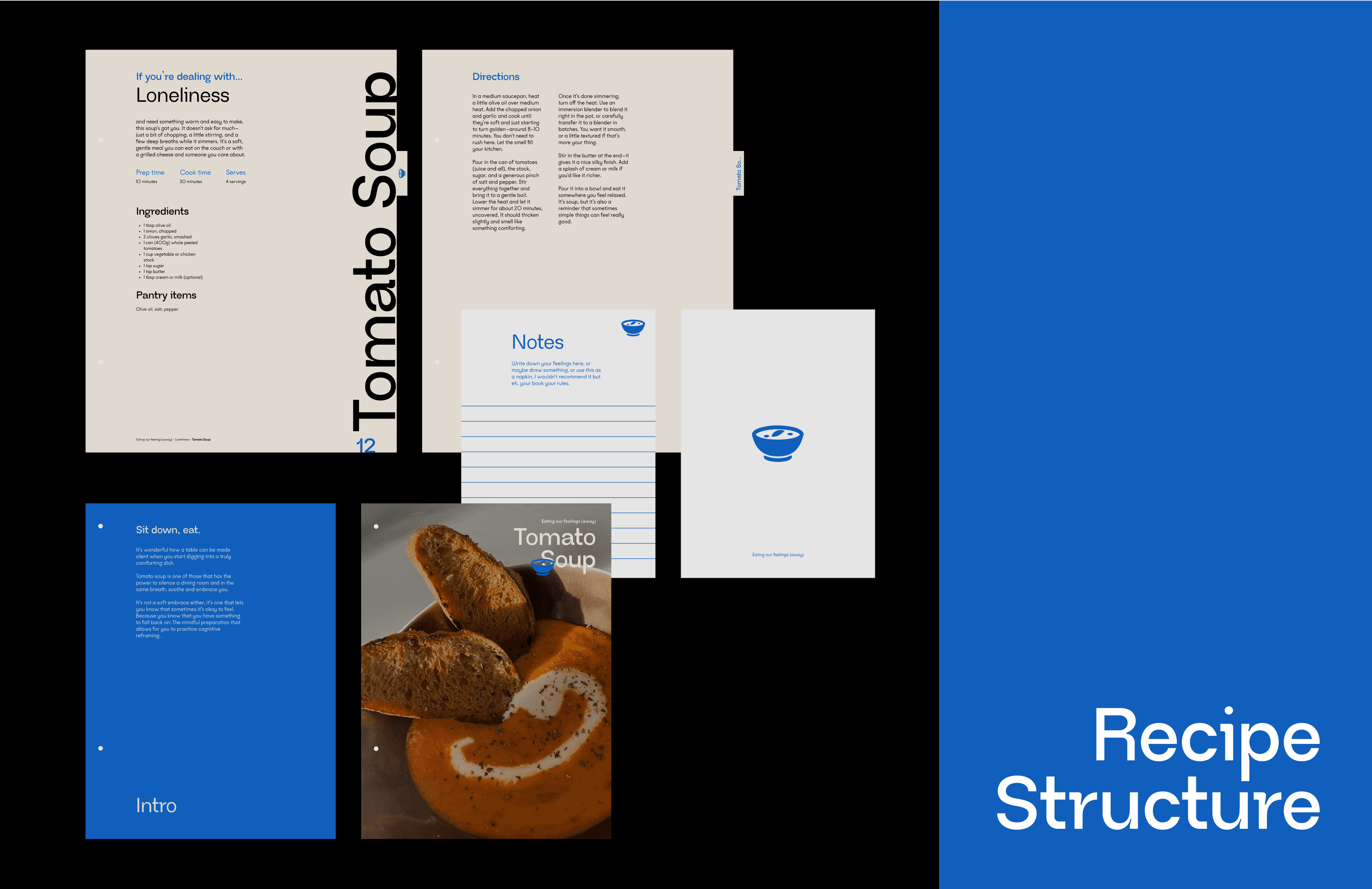Eating our feelings (away)
Eating our feelings (away)
Eating Our Feelings (away) is an emotionally-driven cookbook that explores the deep connection between food, feeling, and the quiet rituals of self-care. It’s not just a collection of recipes—it’s a tactile, thoughtful experience meant to meet you where you are, whether you’re lonely, anxious, lethargic, or happily buzzing with joy.



Editorial Design
Editorial Design
Visually, the project draws from modern editorial design, combining bold colors, Swiss-style grids, and clean, expressive typography with warm photography and playful layout choices. Each emotional chapter—Loneliness, Lethargy, Anxiety, and Happiness—has its own color-coded system, giving the reader visual cues for mood and tone. These choices aren’t just aesthetic—they’re intentional, helping anchor the emotional atmosphere of each recipe before a single word is read.
Visually, the project draws from modern editorial design, combining bold colors, Swiss-style grids, and clean, expressive typography with warm photography and playful layout choices. Each emotional chapter—Loneliness, Lethargy, Anxiety, and Happiness—has its own color-coded system, giving the reader visual cues for mood and tone. These choices aren’t just aesthetic—they’re intentional, helping anchor the emotional atmosphere of each recipe before a single word is read.
Editorial Design
Visually, the project draws from modern editorial design, combining bold colors, Swiss-style grids, and clean, expressive typography with warm photography and playful layout choices. Each emotional chapter—Loneliness, Lethargy, Anxiety, and Happiness—has its own color-coded system, giving the reader visual cues for mood and tone. These choices aren’t just aesthetic—they’re intentional, helping anchor the emotional atmosphere of each recipe before a single word is read.
Product Design
Product Design
The heart of the format lies in the modularity: each recipe is treated as its own booklet. These individual booklets contain three key elements—first, a short, poetic intro that gently frames the recipe in the context of its emotion; second, the recipe itself, written in a friendly and supportive tone; and finally, a blank note page inviting the reader to write, reflect, or adapt the dish to their own needs. The design encourages interaction and ownership, treating cooking as a creative act of emotional grounding.
The heart of the format lies in the modularity: each recipe is treated as its own booklet. These individual booklets contain three key elements—first, a short, poetic intro that gently frames the recipe in the context of its emotion; second, the recipe itself, written in a friendly and supportive tone; and finally, a blank note page inviting the reader to write, reflect, or adapt the dish to their own needs. The design encourages interaction and ownership, treating cooking as a creative act of emotional grounding.
Product Design
The heart of the format lies in the modularity: each recipe is treated as its own booklet. These individual booklets contain three key elements—first, a short, poetic intro that gently frames the recipe in the context of its emotion; second, the recipe itself, written in a friendly and supportive tone; and finally, a blank note page inviting the reader to write, reflect, or adapt the dish to their own needs. The design encourages interaction and ownership, treating cooking as a creative act of emotional grounding.
Book Binding
Book Binding
All the booklets are bound dossier-style inside a custom hardcover case. This makes the book flexible: it opens fully flat on a kitchen counter, and readers can remove individual recipes to cook from them freely. It’s a form that feels personal and tactile—less like a traditional cookbook and more like a tool for self-soothing, comfort, and connection.
All the booklets are bound dossier-style inside a custom hardcover case. This makes the book flexible: it opens fully flat on a kitchen counter, and readers can remove individual recipes to cook from them freely. It’s a form that feels personal and tactile—less like a traditional cookbook and more like a tool for self-soothing, comfort, and connection.
Book Binding
All the booklets are bound dossier-style inside a custom hardcover case. This makes the book flexible: it opens fully flat on a kitchen counter, and readers can remove individual recipes to cook from them freely. It’s a form that feels personal and tactile—less like a traditional cookbook and more like a tool for self-soothing, comfort, and connection.










More Works More Works
More Works More Works

